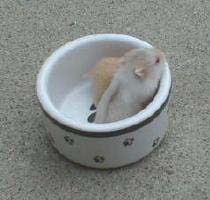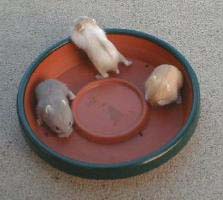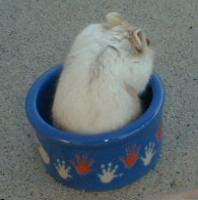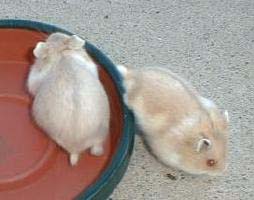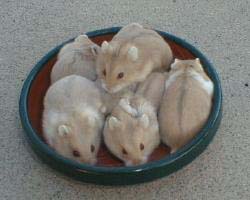When the black gene showed up in the dwarves, the hamsters were not the same jet black color as they were in the syrians. The most striking difference is that the black dwarves silver – or go gray – with age. Some show silvering when they first get their color. Others don’t show silvering until months later. All except some of the black mottleds have silvered with age (see my other page with silvering in the blacks for more detail).
It is not known whether silvering is part of the black gene or a separate but closely linked gene. The fact that some mottleds do not silver has lead people to suspect that they are two separate genes. It is also supposed that silvering is recessive just from its behavior. Once it is proven whether the silvering is a separate gene or part of the black gene, we can move to standardize the color in the dwarves.
I have kept the Platinum gene totally out of my black lines since I want to work with silvering, and the Platinum can easily be confused with silvering. I have never had any Platinums show up in these lines either. Since Platinum is dominant and can’t be carried, I was secure in the fact that the black lines I imported did not have Platinum.
Well, in early October of 2000, I had a Platinum-looking baby show up in these lines. He appears to be an Argente. The mother is a third generation female out of these lines. The father is a second generation hamster. Here is a picture of him as a baby with his Beige brother and RE Lilac sister plus a picture when he's two and a half months old.. |
